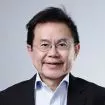- within Intellectual Property topic(s)
- within Finance and Banking, Privacy and Consumer Protection topic(s)
- in European Union
A note by Kin Wah Chow on how to get second medical use claims through; and on enforcement of Swiss-type claims.
Contrary to popular belief, the 2016 Indonesian Patent Law has not categorically shut the door to all forms of second medical use claims. Second medical use in certain forms is still allowed. Our note below discusses how to get such claims through; and on enforcement of Swiss type claims.
In Indonesia, second medical claims were accepted under the 2001 Patent Law by the patent Office by couching the claims in the form of Swiss type claims. This was until 2016 when the new Patent Law was enacted. One rationale for the change in 2016 to exclude such medical use claims was to support the local generic industry.
The onset of the Covid-19 pandemic caused some rethink on this position with the realisation that second medical uses are usually discovered and proven efficacious following significant investment, and the outcome can be uncertain. This is the argument for the importance of remunerating the developers in the research and clinical trial. The media spotlight on many attempts to repurpose existing drugs was useful in demonstrating this point. The fact that many attempts failed to underscore the highly uncertain nature of discovery and trialling existing drugs for new purposes.
Informal discussion with the Patent Office indicates that they are considering removing the bar to patenting second medical use in the next round of patent law revision although there is no clear indication when the patent law will be amended again.
However, informal discussion and presentation materials shared indicated that the patent law provision does not specifically exclude medical use claims format that is in the form of - product for use. Informally, the Indonesian Patent Office seems to be applying Article 54(4)/(5) of the EPC; however, the practice at the Indonesian Patent Office may not necessarily be consistent.
A grant of the same patent family by the EPO with a product for use claim is likely to be useful and the basis for requesting for grant of the same Indonesian patent family.
Most patent grants in Indonesia are issued on basis of corresponding grants in another country provided that the Indonesian grants are amended to conform with the overseas patents.
Enforcing Swiss type claim
Indonesia is ripe for the generics market. There are over 200 generics manufacturers in Indonesia.
The patent applications (with Swiss type claims) filed before 2016 were granted and many of these continue to be in force despite the 2016 law revision. Swiss type claim prefaces with "the manufacture of drug X..". It is therefore doubtful if the claim can be enforced against participants in the value chain other than manufacturers. Further, enforcement against hospitals is not a good public relations exercise.
As discussed in the previous section, Swiss type style claims might be replaced by EPC style products for use claims.
Proving infringement against manufacturers will require proof that the drug is for "treatment of disease y".
In Indonesia, the key evidence of infringement is the indication for the drug.
Skinny labels for generics may not be possible in Indonesia because generic drug manufacturers typically need to rely on the originator drug's prior marketing approval by submitting a dossier on bioequivalence (for certain copy drugs) to the originator drug. In such cases, the indication will have to be identical to that of the originator drug's indication. The indication for the copy or generic drug would be an important source of proof that the drug is meant for the treatment protected in the medical use claim.
It is therefore important to have the indication of the originator drug track important elements of the claim as far as possible e.g treatment, dosage and quantity of active ingredient. Indication with more of such elements strengthens the proof towards a finding of infringement.
The presence of such elements makes it easier to prove that the drug is intended for the same treatment claimed in the patent.
Unlike in other countries, it is probably difficult to use survey evidence from doctor interviews on the purpose for prescribing such drugs. Doctors in government hospitals are not likely to be willing to participate in such surveys. It is open to the generic manufacturer to argue that survey evidence alone is unreliable in proving the purpose of the drug.
As such, it is important to carefully consider the framing of the indication when seeking marketing approval of the originator drug. This is with the view of strengthening subsequent enforcement action.
The content of this article is intended to provide a general guide to the subject matter. Specialist advice should be sought about your specific circumstances.


